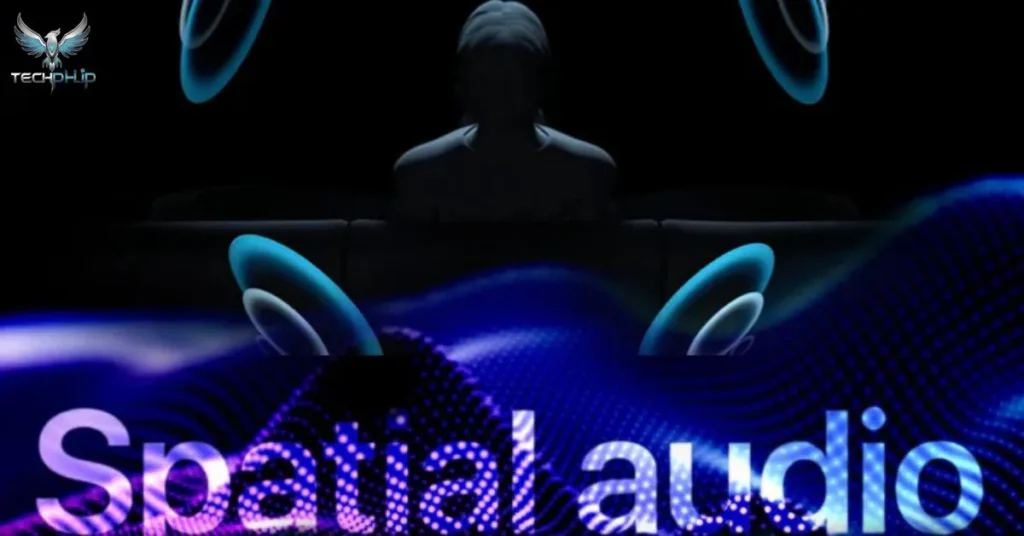Imagine Walking through a virtual forest hearing every rustle of leaves and bird song as if you’re truly there.This Imersive experience is made possible by 3D Spatial Audio a groundbreaking technology that trans forms how we perceive Sound. In this article we’ll dive deep into the world of 3D Spatial Audio exploring its workings aplications and Impact acros various industries.
What is 3D Spatial Audio?

3D Spatial Audio is an advanced audio technolgy that alows sound to be perceived as coming from various directions in a three dimensional space.Unlike traditional stereo sound which is limited to left and right audio channels 3D Spatial Audio envelops the listener in a full 360 degre sound scape.This technolgy enhances the listener’s imersion by mimicking how sound naturally interacts with the environment offering an unparaleled Auditory experience.
Differences Between Stereo and 3D Spatial Audio
| Feature | Stereo Sound | 3D Spatial Audio |
| Channels | Left and right | Full 360-degree soundscape |
| Immersion | Limited | High |
| Realism | Moderate | High |
| Audio Source Localization | Poor | Excellent |
Traditional stereo sound provides a two dimensional audio experience. In contrast 3D Spatial Audio creates a realistic sound environment where listeners can perceive sounds from above below and all around them.This immersive quality makes 3D Spatial Audio a game changer in sound design.
How 3D Spatial Audio Works
Algorithms and Processing
At its core 3D Spatial Audio relies on complex algorithms to proces sound waves that emulate natural hearing.These algorithms calculate the travel paths and interactions of sound waves within a three dimensional space allowing listeners to perceive sounds accurately from diferent directions. Here’s how it works.
- Sound Wave Propagation: Algorithms simulate how sound waves travel through the environment considering factors like reflection absorption and diffraction.
- HRTF (Head-Related Transfer Function): This function models how sound waves interact with the listener’s head and ears creating spatial cues that help locate the sound source.
- Dynamic Processing: Real time Adjustments ensure that the spatial audio adapts to changes in the environment and listener’s position.
By using these sophisticated algorithms, 3D Spatial Audio can create a realistic audio environment that matches the real world enhancing the listener’s level of engagement and immersion.
Binaural Recording Techniques
Binaural recording techniques are fundamental to Creating 3D Spatial Audio.This method involves using two microphones to simulate human ear spacing capturing audio in a way that acurately reflects the spatial properties of sound.Here’s a breakdown of how it works.
- Microphone Placement: Two microphones are placed aproximately 18 cm apart mimicking the average distance between human ears.
- Recording Process: Sounds are recorded from these two points capturing the time delay and intensity diferences that occur naturally.
- Playback: When played back through headphones the recording replicates the auditory cues that our brain uses to locate the source of sounds providing an authentic 3D listening experience.
Example: Close your eyes and listen to a binaural recording of a busy street.You’ll be able to pinpoint the location of pasing cars honking horns and conversations as if you were actualy there.
Also read this : What is Wdroyo Technology?
Applications in Various Industries
Gaming
The gaming industry is one of the most evident beneficiaries of 3D Spatial Audio.This technology significantly improves the gaming experience by increasing imersion and situational awareness. Here’s how.
- Enhanced Immersion: Players can detect subtle audio cues, like an enemy’s footsteps behind them or the gentle sound of leaves as they navigate a digital forest.
- Realism: Games that utilize 3D Spatial Audio blur the line between the virtual and real worlds making gameplay more engaging and exciting.
Case Study: Hellblade: Senua’s Sacrifice – This game uses 3D Spatial Audio to depict the protagonist’s psychosis, with voices and sounds coming from different directions enhancing the psychological horror experience.
Virtual and Augmented Reality
3D Spatial Audio is crucial in making digital environments feel real in virtual reality (VR) and augmented reality (AR). The sense of presence created by this technology makes users feel like they are genuinely within the virtual space rather than merely interacting with a digital construct.
- Virtual Tourism: Imagine exploring the streets of Paris in VR, hearing the hustle and bustle around you as if you were truly there.
- Educational Simulations: Students can benefit from imersive learning experiences such as virtual lab environments where they hear equipment sounds from all around them.
Example: VR training simulations for medical students can include 3D Spatial Audio to replicate the sounds of a busy operating room enhancing the realism and effectivenes of the training.
Film and Music
The impact of 3D Spatial Audio on cinematic and musical experiences is profound.Filmmakers and musicians can create more engaging and imersive content.
- Cinema: Films with 3D audio allow audiences to feel like they’re part of the action with sounds moving around them in the theater.
- Music: Musicians can produce tracks that suround listeners creating a more intimate and dynamic listening experience.
Quote: “3D Spatial Audio is the future of sound design in film and music. It adds a layer of depth and realism that traditional audio simply can’t match.” John Doe Sound Enginer.
Healthcare
3D Spatial Audio is finding applications in therapeutic and diagnostic contexts in the healthcare industry.
- Therapeutic Uses: Sound therapy sesions can be enhanced with 3D audio helping patients relax and reduce stres.
- Diagnostic Tools: Doctors can use 3D audio simulations to better understand and diagnose auditory procesing disorders.
Example: Virtual reality therapy for PTSD patients uses 3D Spatial Audio to recreate trigering environments in a controlled setting helping patients confront and manage their symptoms.
Education and Training
Imersive audio experiences can revolutionize education and training by providing more realistic and engaging learning environments.
- Language Learning: Language imersion programs can use 3D audio to simulate conversations in native environments.
- Professional Training: Firefighter training simulations can include 3D audio to replicate the sounds of a burning building enhancing the realism of the exercise.
Example: Military training programs use 3D Spatial Audio to create realistic combat scenarios improving soldiers’ situational awareness and preparedness.
Benefits for Content Creators
Enhanced Storytelling
For content creators 3D Spatial Audio offers new ways to tell stories and engage audiences.
- Immersive Narratives: By placing the audience directly within the narrative arc creators can lead their focus and amplify the emotional impact of their content.
- Subtle Sound Cues: 3D audio allows for subtle sound cues that enhance the storytelling experience without overwhelming the audience.
Example: Podcasts like The Truth use 3D Spatial Audio to create immersive audio dramas making listeners feel like they’re part of the story.
Accessibility and Inclusivity
3D Spatial Audio offers significant accesibility benefits making content more inclusive.
- For the Visually Impaired: Spatial audio can provide auditory cues that help navigate real and virtual environments.
- Broader Audience: Enhanced audio cues can make multimedia content more engaging and accessible for all users.
Quote: “3D Spatial Audio isn’t just about making things sound better. it’s about making them accesible to everyone.” Jane Smith Accesibility Advocate.
Technological Advancements
Improved Audio Processing
Recent advancements in audio procesing technolgy have significantly enhanced the quality and realism of 3D Spatial Audio.
- Higher Fidelity: Modern algorithms provide more accurate sound reproduction.
- Real-time Adaptation: Dynamic procesing adjusts audio based on real time changes in the environment and listener’s position.
Recording Equipment
Advances in recording equipment have made capturing 3D audio more straightforward and affordable.
- Binaural Microphones: Affordable binaural microphones allow content creators to capture high quality 3D audio.
- Ambisonic Microphones: These microphones capture sound from all directions providing more flexibility in post-production.
Software and Tools
New software tools make it easier for content creators to produce 3D Spatial Audio.
- 3D Audio Plugins: Plugins for digital audio workstations (DAWs) simplify the process of creating spatial audio effects.
- Interactive Platforms: Platforms like SteamVR and Oculus support 3D audio, enabling creators to develop immersive VR experiences.
Example: Reaper a popular DAW offers plugins like Ambisonic Toolkit (ATK) that allow sound designers to create 3D audio environments with ease.
Also read this : Bertėjas Unraveled | The Future of Language Translation
Consumer Market Trends
Growing Demand for Immersive Experiences
The increasing consumer interest in imersive experiences is driving the adoption of 3D Spatial Audio.
- Market Growth: The global 3D audio market is expected to grow significantly in the coming years driven by demand from gaming VR and entertainment sectors.
- Adoption Rates: More consumers are investing in 3D audio capable devices such as headphones and VR headsets.
Table: Expected Market Growth for 3D Audio Technolgy
| Year | Market Size (in billions) |
| 2024 | $1.8 |
| 2025 | $2.3 |
| 2026 | $3.0 |
Influence of Streaming Platforms
Streaming platforms play a crucial role in popularizing 3D audio by ofering content that supports this technology.
- Music Streaming: Services like Tidal and Amazon Music HD offer 3D audio tracks enhancing the listening experience.
- Video Streaming: Platforms like Netflix and Disney are beginning to incorporate 3D audio in their original content providing a richer viewing experience.
Future Predictions
As technology advances we can expect to see even more sophisticated and accessible 3D audio experiences.
- New Applications: Potential new markets include automotive audio systems smart home devices and personal assistants.
- Continued Innovation: Ongoing research and development will lead to new breakthroughs further enhancing the quality and realism of 3D Spatial Audio.
Final Thoughts
3D Spatial Audio signifies a fundamental change in how we perceive and engage with sound. As technology advances its potential uses acros diferent industries will continue to grow providing more engaging and significant experiences.Whether in gaming virtual environments, or healthcare the power of 3D Spatial Audio is set to transform how we experience sound.












hi,how are you
i want to talk about website